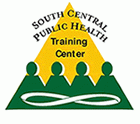
Decision Making in Disasters: Lessons from the Field
Course Description:
The current increasingly technical and urbanized centers of human population present critical challenges and opportunities to the profession of Disaster Management in the early 21st century. The lessons and practices of yesterday no longer address a widening and diversifying pattern of population vulnerabilities which modern medical therapeutics, evolving demographics and lifestyle enhancement have generated on a global scale. The vital needs of a population at risk have expanded vastly over the past half century with enormously expanded percentages of individuals in medically vulnerable states; these individuals are potentially pushed to seek critical support in the face of environmental or social catastrophe through means which have been impaired by the imposition of external perils on the community. Those needs impact the welfare and serenity of a much wider population at large whose related needs may be entangled by a need to assist stricken neighbors or citizens. Needs of a population at risk are addressed in the context of enabling a population at large. Morale of a responding team is improved by designing response as an extension of routine practice. A mandate to plan for the worst evolves where time is of the essence. Refinement in sheltering, evacuation and community action is considered under circumstances where you can't always get what you want. Planning and communication in a new age provide means and avenues for bridging present and impending shortfalls on the journey into tomorrow.
Target Audience
Academic Faculty/Staff, Federal Government Employees, State Government Employees, Local Government Employees, Non-Government Employees and Students
Learning Objectives
- Examination of the practical consequences impacting population vulnerabilities which modern medical therapeutics, evolving demographics and lifestyle enhancement have generated
- Addressing the crisis needs of a population at risk through extension of routine operations including the enabling of a population at large
- Refinement in sheltering, evacuation, planning and community action under circumstances where you can't always get what you want
Instructor:

Joseph Contiguglia, MD, MPHTM, MBA
Available Credit
- 8.00 Participation/CETulane Professional and Continuing Education (PaCE) awards 8.00 hour(s) of credit for completing Decision Making in Disasters: Lessons from the Field
Price
Required Hardware/software
System Settings
This course is designed to work most effectively if your computer and internet connection meet certain minimal requirements. This course can be accessed using a Windows 10 PC or a Mac with High Sierra1, Mojave, or Catalina. Pop-up blockers should be disabled when viewing the course. Internet Explorer 11 (for Windows 10), or the current version of Google Chrome, Mozilla Firefox, or Apple Safari (for Windows 10 and or Mac) is required. Many of our courses require Java and JavaScript enabled.
Links to External Websites
Links to websites outside this course will open in a new window or tab. Some browsers may minimize the course window. If this occurs, maximize the course window to return to the course.
Adobe Acrobat Reader (for desktops and laptops)
Adobe Acrobat Reader is required to access some documents in this course. If you need to download a free copy of Acrobat Reader, click here.
Internet Connection Speed
A minimum download speed of 1.5 Mbps is recommended for an optimal experience, which is commonly the speed associated with a basic DSL or a cellular/satellite connection. A faster connection, such as cable or fiber service, with further enhance your online experience. A Wi-Fi connection is generally acceptable, but it is dependent upon one of the two services mentioned above. You can check your internet connection speed at http://www.speedtest.net/.

 Facebook
Facebook Twitter
Twitter LinkedIn
LinkedIn Forward
Forward